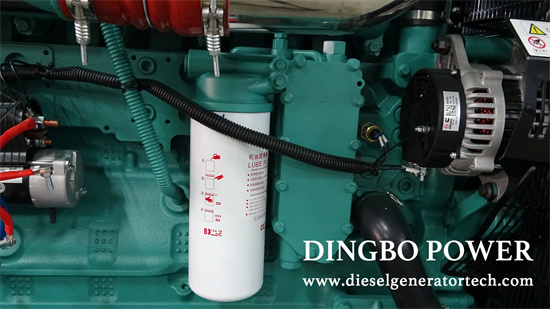Do you know how diesel generator sets are distributed with load power? In fact, when the active power distribution of parallel diesel generator sets is severely unbalanced, and when the total load power is large, one diesel generator set is at full load or overloaded, while the other diesel generator set is still in a light load state, the capacity of the diesel generator set cannot be fully utilized, and the efficiency of the entire power station can be achieved. On the other hand, when the total power of the load is small, the imbalance of active power often causes active power circulation between diesel generator sets, causing them to switch to the motor state, which is also not allowed for diesel generator sets.

Given the above situation, special attention needs to be paid to diesel generating sets with frequent loads and large amplitude changes. The uneven distribution of reactive power in diesel generator sets, although not seriously affected, is based on a clear imbalance in power. Reactive power is determined by the power generator, which is bound to cause imbalance. Similarly, it limits the playback of a set of capacity generators, especially for low power factor power plants, where the unit load capacity does not depend on the rated power of the diesel generator set, But it depends on the rated current value of the generator.
The unbalanced part of the reactive load can also be seen as a circulating current between two generators. Sometimes this circulating current can exceed the load current of the generator, causing additional internal losses and even overloading the generator. In addition, the reactive current of the generator is consistent with its excitation current. Reactive current imbalance often occurs simultaneously with excitation current imbalance, causing overload of the excitation system and even causing faults such as burning of the generator rotor winding and damage to the rectifier diode of the phase compound excitation device. The consequences of this error are often quite serious. It can be seen that the uniform distribution of reactive and active loads has the same significance.
Jiangsu Dingbo Power Generation Equipment Co., Ltd. was founded in 1974 and is one of the earliest manufacturers of generators and diesel generator sets in China. The company has a registered capital of 218.88 million yuan. The company covers an area of 86,000 square meters and a building area of 55,000 square meters. There are more than 660 employees, including 456 professional technicians and 106 senior technicians. It has 46 sales and service outlets nationwide. The main products are diesel engines, generator sets, and diesel generators, providing users with a one-stop service of design, supply, debugging and maintenance at any time. Dingbo has always insisted on using first-class talents, building first-class enterprises, manufacturing first-class products, creating first-class services, and making every effort to build a first-class domestic enterprise. If any question please feel free to visit our website https://www.dieselgeneratortech.com/ or send email to sales@dieselgeneratortech.com.
Comments
Post a Comment